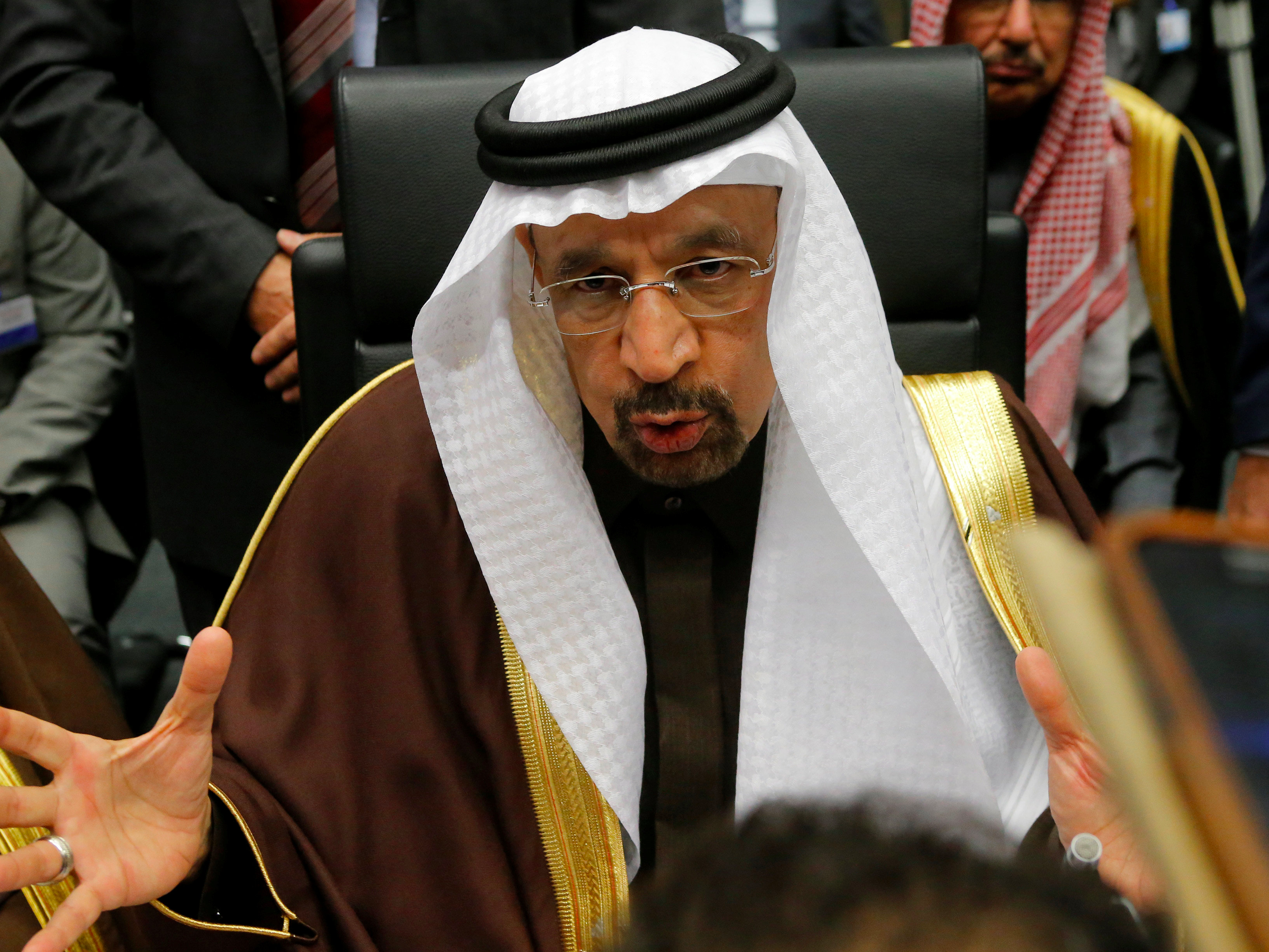The price of oil surged on Wednesday after the oil producers cartel OPEC finally agreed a deal to cut output after a meeting in Vienna.
The cut will be OPEC’s first since 2008, and brings to an end a period where member nations have pumped as much oil as they wish.
The move is designed to end the huge glut of the world’s most important commodity that has helped drive prices down from more than $100 per barrel in mid-2014, to around $50 now.
Earlier on Wednesday, both Reuters and Bloomberg News reported that an unnamed “delegate to the group” confirmed output will be cut be 1.2 million barrels per day to 32.5 million per day.
The Kuwaiti oil minister confirmed the cut to Agence France Presse. It will come into force from January 2017.
As of 5:05 p.m. GMT (12:05 a.m. ET), the price of Brent oil bounced by more than 9%, or more than $4 per barrel, after cratering on Tuesday afternoon. Oil had held onto gains of around 7% for most of the European afternoon.
Here's the chart:

The price of US West Texas Intermediate crude has also followed suit:

A deal was reportedly struck after Saudi Arabia and Iran managed to reach a compromise after weeks of tensions. "It appears the Saudis accepted that Iran, as a special case, can raise production to about 3.9 million barrels a day," Bloomberg says.
Reuters reports that Saudi Arabia will now cut its output to 10.06 million barrels per day, accounting for around 500,000 of the 1.2 million barrel cut. The United Arab Emirates, Kuwait, and Qatar will cut by a combined total of roughly 300,000 barrels per day. Iraq will slash its production levels by 200,000 barrels.
Indonesia has been suspended from the group, and OPEC has agreed to distribute Indonesia's oil output share among certain countries, Reuters adds.
Reuters' source also said OPEC's agreement was as a result of a proposal first tabled by Algeria's delegation.
As with most OPEC meetings, it is currently hard to tell if the information coming from the meeting is simply rumours. The cartel's gatherings are notorious for the sheer volume of chatter and leaked "news" that tends to emerge before members officially announce their decisions.
OPEC delegates started a closed-door session at around 1000 GMT (5:00 a.m. ET) and had been expected to give a press conference at 3.00 p.m. GMT (10.00 a.m. ET), but were still in discussions long after that time.
On Wednesday morning, Reuters reported that a delegate from the Iraqi contingent said that "there will be an agreement today," while the Iranian Oil Minister Bijan Zanganeh said "I'm optimistic."
Earlier, Reuters reported that Saudi Energy Minister Khalid al-Falih said OPEC was close to clinching a deal to limit oil output, adding that OPEC is focusing on reducing output to a ceiling of 32.5 million barrels per day, or cutting by more than 1 million bpd, and hoped Russia and other non-OPEC members would contribute a cut of another 0.6 million bpd.
"It will mean that we (Saudi) take a big cut and a big hit from our current production and from our forecast for 2017. So we will not do it unless we make sure that there is consensus and an agreement to meet all of the principles," Falih said.
In other oil-related news, US stockpiles of the commodity unexpectedly fell last week. Inventories dropped 884,000 barrels in the week, compared with analysts' expectations for an increase of 636,000 barrels. The markets virtually ignored that news, given that all eyes are trained on Vienna.
